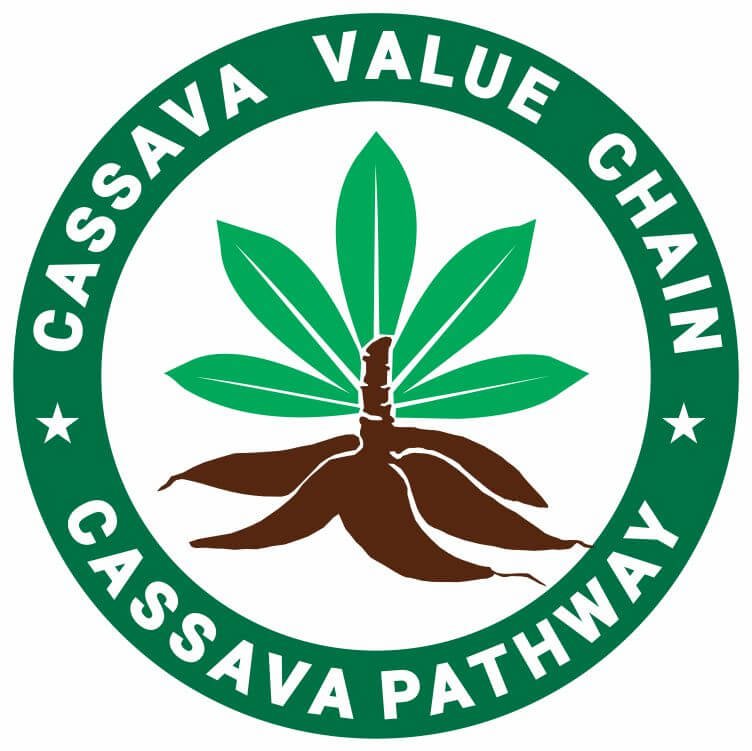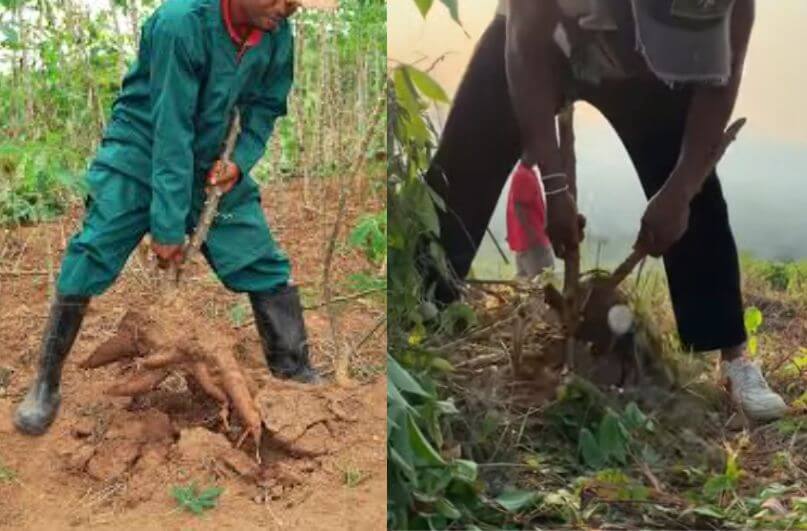Knowing how to harvest cassava roots and the proper method is an important step in cassava farming, as it maximizes yield and quality.
You might be working on a small-scale farm or a larger commercial operation; understanding the different methods of harvesting can make a difference in the efficiency and outcome of your harvest.
There are traditional hand tools for smaller plots and modern machinery for larger fields, each with its unique advantages.
In this guide, we’ll teach you both traditional and modern cassava root harvesting methods, providing you with valuable insights to help you successfully gather your crop with minimal damage. Also, see how to know when cassava is ready to be harvested.
Related: Crops that Can Pair with Cassava for Intercropping
Table of Contents
- Traditional Methods of Harvesting Cassava Roots
- Modern Methods of Harvesting Cassava Roots
- Comparing the Cassava Harvesting Techniques
- Best Practices for Harvesting Cassava
- Conclusion
Traditional Methods of Harvesting Cassava Roots
Traditional methods of harvesting cassava roots primarily revolve around manual uprooting, a process that has been utilized for generations in various regions where this crop is cultivated.
In my cassava-farming community, cassava is harvested by pulling up the cassava plant by the stems, which requires strength and stamina.
The bigger the cassava roots, the more strength they require.
Here’s a breakdown of the process:
- Cutting the Stems: The first step involves cutting the cassava stems at ground level using machetes or knives. This action is important to prepare the plant for harvest.
- Loosening the Soil: After severing the stems, you use hoes or digging sticks to loosen the soil surrounding the roots. Loosening the soil is needed for easy extraction and helps prevent damage to the roots.
- Extracting the Roots: Finally, the roots are pulled by hand, requiring skill and care. Gentle handling is important to avoid bruising or splitting the roots, preserving their quality.
Key Considerations: Soil moisture plays a significant role in making the extraction process easier. Moist soil simplifies loosening, whereas dry soil makes the task more labor-intensive.
Pros of the Traditional Method
Using traditional methods to harvest cassava offers multiple benefits:
- Cost Efficiency: Since manual labor is used, farmers save on costs related to machinery, improving overall profit margins.
- Better Quality: Hand-harvested cassava tends to have superior culinary quality, making it more appealing to consumers.
- Sustainability: The traditional method supports sustainable farming practices, helping preserve the environment and the integrity of the cassava roots.
These methods continue to be crucial for maintaining the quality of cassava and sustaining agricultural traditions.
Related Posts
- Local and Modern Tools and Equipment for Cassava Processing
- How to Grow Cassava in Small Spaces
- Recommended Inter and Intra-row Spacing for Cassava
- How to Preserve Cassava Tubers
- How to Cook Cassava Tubers
- Cassava Stem: Everything to Know
- Best Practices in Cassava Farming
- How to Harvest Cassava Tubers to Minimize Damages
Modern Methods of Harvesting Cassava Roots
Modern harvesting techniques for cassava focus on increasing efficiency and reducing labor. The modern method comes in two ways: the semi-mechanized harvesting and the fully-mechanized harvesting methods.
Semi-Mechanized Cassava Harvesting
This method involves using tractor-mounted implements with plows designed to dig into the soil, loosening the cassava roots.
After the initial digging, farm workers manually collect the roots.
This approach strikes a balance between mechanization and manual labor, offering small farms an efficient, cost-effective solution without the need for expensive fully automated machinery.
Fully Mechanized Cassava Harvesting
Designed for large-scale cassava production, this technique uses advanced machinery that can both uproot and collect cassava roots simultaneously.
Large harvesters with specialized attachments separate the roots from the soil with minimal manual effort, reducing labor costs and crop damage while improving harvesting efficiency.
Pros of the Modern Method
Modern harvesting methods offer significant advantages depending on the size of the farm and available resources:
- Efficiency Gains: Fully mechanized methods reduce time and labor costs, making them ideal for large-scale production.
- Reduced Crop Damage: Advanced machinery ensures minimal damage to the cassava roots, improving overall root quality.
- Flexibility for Smaller Farms: Semi-mechanized methods are a great option for smaller farms, providing mechanization benefits without the high costs of fully automated systems.
Both methods improve the harvesting process, improving productivity while accommodating different farm scales and resources.
Comparing the Cassava Harvesting Techniques
Harvesting cassava roots involves two primary approaches: traditional and modern methods.
Each method has distinct advantages and challenges, directly influencing productivity and root quality.
Farmers and stakeholders must evaluate these techniques to optimize their harvesting process based on their scale of operation, available resources, and specific needs.
Traditional Harvesting Methods
Traditional methods rely heavily on manual labor and simple tools such as machetes and hoes.
This approach has been used for generations and offers several advantages:
- Control Over the Process: Farmers can carefully assess the maturity of the roots, ensuring optimal quality during extraction.
- Low Financial Investment: With minimal tools required, traditional methods are accessible for smallholder farmers with limited budgets.
However, traditional methods also come with challenges:
- Labor-Intensive: Manual harvesting can be slow and physically demanding, leading to inefficiencies during peak harvesting periods.
- Labor Shortages: In regions with a declining workforce, relying solely on human labor can become unsustainable.
Modern Harvesting Methods
Modern methods incorporate advanced machinery to streamline the harvesting process.
These techniques offer significant benefits:
- Increases Efficiency: Mechanical harvesting drastically reduces the time needed to harvest cassava, allowing larger areas to be processed quickly.
- Reduces Physical Strain: Mechanization minimizes the physical demands on workers, improving overall productivity.
Despite these advantages, modern methods have their drawbacks:
- High Cost: The initial investment and maintenance of machinery can be expensive, making it challenging for small-scale farmers.
- Potential for Root Damage: Improper handling of machinery may harm the roots, affecting their quality and marketability.
| Aspect | Traditional Methods | Modern Methods |
|---|---|---|
| Cost | Low financial investment | High upfront investment |
| Efficiency | Labor-intensive and slower | Highly efficient and fast |
| Root Quality | Greater control, less root damage | High-quality roots with proper handling |
| Scalability | Best for small-scale operations | Ideal for medium to large-scale farms |
| Labor Dependence | Requires significant manual labor | Reduces dependency on manual labor |
Choosing the Right Cassava Harvesting Technique
The decision between traditional and modern methods depends on several factors:
- Economic Capabilities: Financial resources determine the feasibility of investing in machinery.
- Labor Availability: Areas with abundant labor may benefit from traditional techniques, while labor-scarce regions might lean toward mechanization.
- Farming Goals: The scale of operations and desired output quality influence the choice of method.
By weighing the pros and cons of each approach, farmers and stakeholders can make informed decisions that align with their specific operational goals and resources.
Related: How to Start Cassava Cultivation
Best Practices for Harvesting Cassava
To optimize your harvest, follow these best practices:
- Harvest at the peak of root maturity to maximize yield and quality.
- Handle roots gently during extraction to avoid bruising or splitting, which can affect their marketability.
- Ensure workers or operators are trained to use tools or machinery correctly.
- Use traditional methods for small farms and semi- or fully mechanized techniques for larger operations.
Conclusion
Harvesting cassava roots effectively is important for maximizing yield and quality.
Traditional methods, like manual uprooting with tools, offer affordability and sustainability, making them ideal for small-scale farmers.
These methods, however, require physical effort and time. Modern methods introduce semi-mechanized and fully mechanized systems, boosting efficiency and reducing labor demands.
Semi-mechanized harvesting combines tractors with manual collection, suitable for smaller farms, while fully mechanized systems streamline large-scale operations.
Choosing the right method depends on factors like farm size, budget, and labor availability.
By understanding these techniques, farmers can tailor their approach to achieve optimal results with minimal crop damage.
References:
- https://agriculture.gov.tt/wp-content/uploads/2021/09/Harvesting-methods-of-Cassava-for-both-printing-and-online-viewing-2.pdf
- http://www.ijerd.com/paper/vol20-issue5/2005253263.pdf

Chimeremeze Emeh is a writer and researcher passionate about Africa’s most transformative root crop—cassava. Through his work at cassavavaluechain.com, he explores the entire cassava industry, from cultivation and processing to its diverse applications in food, health, and industrial use.
He also writes for palmoilpalm.com, where he shares his extensive experience and deep-rooted knowledge of palm oil, covering red palm oil, palm kernel oil, and refined products. His work there reflects his lifelong connection to agriculture and his commitment to promoting sustainable value chains in Africa.
Driven by curiosity and purpose, Chimeremeze aims to shed light on how cassava continues to empower communities, strengthen food systems, and link traditional farming wisdom with modern innovation.

